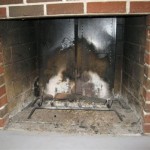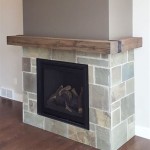How to Build an Outdoor Patio Fireplace
An outdoor patio fireplace can function as a focal point, providing warmth and enhancing the ambiance of an outdoor living space. Building one requires careful planning, adherence to local codes, and a solid understanding of construction techniques. The following guide outlines the essential steps involved in constructing an outdoor patio fireplace, ensuring both safety and aesthetic appeal.
Planning and Preparation
Before commencing any construction work, thorough planning is crucial. This stage involves assessing the available space, understanding local building codes and regulations, and selecting the appropriate design and materials.
The first factor to consider is the location of the fireplace. It should be situated in an area that allows for adequate ventilation and is away from flammable materials such as trees, fences, and overhanging structures. Consider prevailing wind direction to minimize smoke blowing towards seating areas or nearby homes. The fireplace should also be accessible and integrated seamlessly into the existing patio layout.
Local building codes often dictate specific regulations regarding fireplace construction. These regulations may include requirements for setbacks from property lines, chimney height, and the use of specific materials. Contacting the local building department is essential to obtain the necessary permits and to ensure compliance with all applicable codes. Failure to comply can result in fines and the requirement to dismantle non-compliant structures.
Selecting the appropriate design and materials is a crucial step. Several design options are available, ranging from traditional brick fireplaces to more contemporary designs using concrete blocks or natural stone. The choice of design should complement the existing landscape and architectural style of the home. Materials should be chosen based on their durability, resistance to heat and weather, and aesthetic appeal. Common materials include firebrick for the firebox, concrete blocks or natural stone for the structure, and mortar specifically formulated for high-temperature applications. A well-thought-out material list will expedite the construction process and minimize unexpected costs.
Construction Process
The construction process involves several key stages, including building the foundation, constructing the firebox and chimney, and adding finishing touches. Each stage requires careful attention to detail and adherence to best practices.
The foundation is the critical supporting structure for the fireplace. It must be strong and stable enough to bear the weight of the entire fireplace. The foundation typically consists of a concrete slab that is poured on a compacted gravel base. The size of the foundation should be larger than the footprint of the fireplace to provide adequate support. Reinforcing steel bars (rebar) should be incorporated into the concrete slab to enhance its strength and prevent cracking. The foundation must be level to ensure the structural integrity of the fireplace. A proper foundation is vital for the longevity and safety of the fireplace.
The firebox is the heart of the fireplace, where the fire is contained. It should be constructed using firebrick, which is designed to withstand high temperatures. The firebox should be properly sized to accommodate the desired size of the fire. The chimney is responsible for venting smoke and gases away from the patio. It should be constructed using concrete blocks or bricks and lined with a flue liner to protect the chimney structure from heat and corrosive gases. The height of the chimney should be sufficient to create adequate draft and prevent smoke from blowing back into the patio area. Proper design and construction of the firebox and chimney are essential for safe and efficient operation of the fireplace.
After the main structure is completed, additional features can be added to enhance the fireplace's functionality and aesthetic appeal. These may include a hearth, which provides a safe and convenient place to tend to the fire; a damper, which controls the airflow through the chimney; and decorative elements such as stone veneers, mantels, or seating areas. The hearth should be constructed of non-combustible material and should extend far enough to protect the surrounding area from sparks and embers. The damper should be properly installed and adjusted to ensure efficient combustion and minimize heat loss when the fireplace is not in use. Finishing touches can significantly enhance the overall look and feel of the fireplace, transforming it into a focal point of the patio.
Safety Considerations and Maintenance
Safety is paramount when building and using an outdoor fireplace. Regular maintenance is also essential to ensure its continued safe and efficient operation.
The first and foremost safety consideration is fire safety. Always have a fire extinguisher or water source readily available. Never leave a fire unattended, and ensure that all embers are completely extinguished before leaving the area. Educate all users on proper fire safety procedures. Install a spark arrestor on the chimney to prevent embers from escaping and potentially igniting nearby materials. Clear the area around the fireplace of any flammable materials. Regular inspection of the firebox and chimney for cracks or other damage is essential. Taking these precautions will significantly reduce the risk of fire-related incidents.
Creosote buildup in the chimney is a significant safety hazard. It is a flammable substance that can accumulate over time and potentially cause a chimney fire. Regular cleaning of the chimney is necessary to remove creosote. A professional chimney sweep should be hired to perform the cleaning, typically at least once a year, depending on usage. Neglecting chimney cleaning can lead to dangerous and potentially catastrophic consequences.
Periodic inspection and maintenance of the fireplace structure are essential. Check for cracks in the mortar joints, loose bricks or stones, and any signs of deterioration. Repair any damage promptly to prevent further degradation. Inspect the flue liner for cracks or damage and replace it if necessary. Ensure that the damper is functioning properly. By conducting regular inspections and maintenance, the fireplace will remain safe and functional for many years.

How To Build An Outdoor Fireplace Step By Guide Buildwithroman

How To Build An Outdoor Fireplace Firefarm Living

How To Build An Outdoor Fireplace Step By Guide Buildwithroman

How We Built Our Outdoor Fireplace Chris Loves Julia
:max_bytes(150000):strip_icc()/chrisjulia-971f3f9eb708447bbd364fc7f4a16280.jpg?strip=all)
10 Free Outdoor Fireplace Construction Plans

How To Build An Outdoor Fireplace Step By Guide Buildwithroman

How To Build An Outdoor Fireplace Using A Kit Tips Guidelines

Turn Your Patio Into A Cozy Getaway With An Outdoor Fireplace

How Much Does It Cost To Build A Diy Outdoor Fireplace
:max_bytes(150000):strip_icc()/milkpaint-286c9ee63b604ca1aaecac5233c8a3f3.jpg?strip=all)
10 Free Outdoor Fireplace Construction Plans
Related Posts








